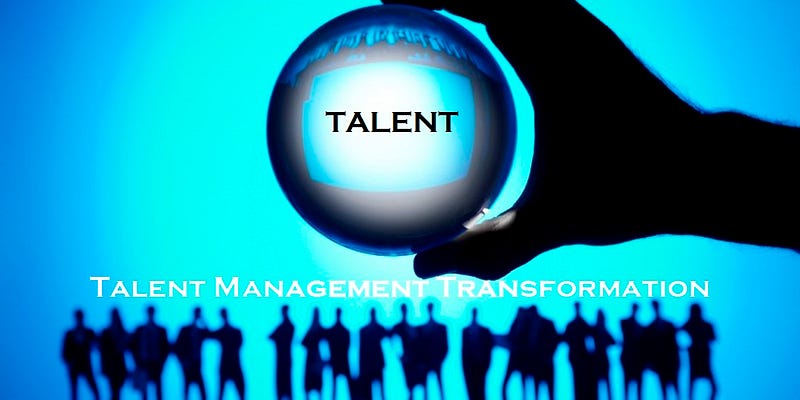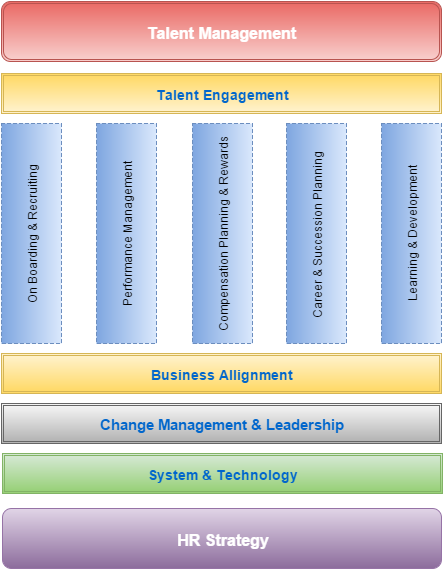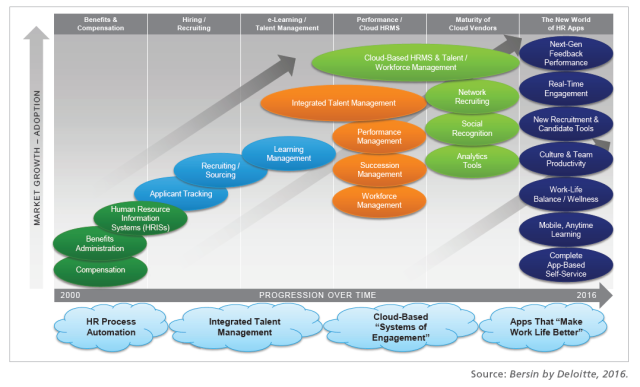There are differences in how Talent is defined across industries and organizations. Some companies prefer to adopt their own determinations rather than accepting general definitions. Let’s focus on a general definition for both Talent and Talent Management:
”Talent consists of those individuals who can make a difference to organizational performance either through their immediate contribution or, in the longer-term, by demonstrating the highest level of potential.”

Basic and simple meaning of Talent could be:
- Ability, aptitude, bent, capacity, endowment, faculty, flair, forte, genius etc.
- Unusual ability to do something well that can be normally developed by training.
- Person or people (‘Talent Pool’) with exceptional capabilities.
Whereas: ”Talent Management is a set of business practices that refer to attracting highly skilled individuals, integrating new talents, and developing and retaining existing talents to meet current and future business objectives.“
Actually it manages the planning, possession, development, retention and growth of Talent Pool who are of particular value to an organization, because of their leadership capabilities, prospective for the future, or even because they are satisfying business critical roles and which could actually lead to organizational sustainability, efficiency and excellence in order to achieve business goals.
The term of Talent Management was first casted by McKinsey & Company following a study and gradually it became a very useful term as it describes an organization’s commitment to hire, manage and retain talented employees. It embraces all of the work processes and practices related to retaining and developing an exclusive workforce.
The process of attracting and retaining effective employees results in increasing competition among the companies because of its strategic importance and also known as “The War for Talent.” Talent Management which is sometimes also called as Human Capital Management is now an essential management practice; before it was exclusively attached to recruitment process while now covers a wider area. Talent Management implies that companies are strategic and conscious in how they source, attract, select, train, develop, retain, promote, and move employees through the organization.
On the other side definition of talented employees can involve all kinds of components, from their educational qualifications and skills, previous experience, strengths and additional training they have undertaken, to their abilities, potential and motives, qualities and personalities. Most companies practice Talent Management in a way which includes recruitment of individuals, career planning, training and development, performance management and various compensation and reward options for the top performers. It generally depends on the business strategy, commitment to employees and other factors. What are the core components of Talent Management?

Talent Engagement and transformation are top priorities for the leaders nowadays and the major challenge is the ability to attract and retain top talent while making sure the existing talents are fully engaged to deliver extraordinary results. For this reason Talent Engagement is considered to be a crucial factor.
End-to-end Talent Management encompasses five main pillars: Recruitment and Onboarding, Performance Management, Compensation Planning and Rewards, Career and Succession Planning, and last but not least, Learning and Development. Previously there were four pillars to be considered under Talent Management but gradually Career and Succession Planning has been added to make them five.
Leaders must have absolute clarity in purpose and focus to avoid business disruption as change without strategy is just a substitution of business development. Therefore, leadership is considered to be one of the most important component of the Talent Management.
Onboarding and Recruiting
An exclusive definition of Onboarding from Bersin by Deloitte states:
“The process of hiring, orienting and immersing employees into their new role and into the organization’s culture.”
Onboarding increases productivity, improves employee engagement, provides consistent and relevant information about the organization to all the new employees and gives understanding of employee expectations and hence helps building relationships.
Recruiting aims to successfully attract and hire key talent for current and future organizational needs through competency based advertising and interviewing efforts. Hiring talented individuals is crucial to the organization’s success. But in order to hire the most talented people, one must first search and recruit them and it could be a challenging task. It is so true that an imperfectly designed recruitment process can miss capable job candidates especially those who work for the competitors.
Performance Management
If we follow the definition it states Performance Management as ongoing, constant process of communicating and simplifying job responsibilities, priorities, performance expectations and development planning that optimizes an individual’s performance and aligns with organizational strategic goals. Performance Management is a crucial segment of maintaining the best talents. It enables companies to identify top performers and high potentials as well as assists to understand the pitfall of under-performance. It helps companies to make better strategic decisions on increasing excellence, retention efforts and to encourage talents.
Compensation Planning and Rewards
A way to remunerate individuals for important achievements, contributions to the goals of an organization and improving skills and competencies in their jobs is called as Compensation. There is a popular old saying — compensation isn’t the reason employees stay, but it can be the reason they leave. If companies want to keep their best employees onboard, they need an elegant approach to use Compensation as a strategic tool, while staying in line with company’s payroll standards, policies and guidelines.
Career and Succession Planning
Succession Management is a process of recognizing and developing employees with the possibility to fill key or critical organizational positions. Succession Management actually means having the right people in the right jobs at the right time. In other words, it is an organized process aimed to identify and grow individuals for future openings.
Career and Succession Planning actually empowers organizations as they plan for the future. The proper way of Career and Succession Planning increases opportunities by allowing organizations to identify and develop the top talent. In addition to preparing new talents to move into key positions, it can effortlessly identify and rectify gaps in Succession Planning as well. It enhances employees engagement by generating proper career paths for them, along with supporting individual development plans.
Learning and Development
Learning Management Systems have been used for a long time to administrate training courses and programs. Experts say that corporate learning is now coming out beyond firm course delivery to a more natural and integrated experience. The companies are embracing new ways of an employee development and reviewing new learning technologies. Massive Open Online Courses (MOOC), Self-Paced Online Courses, Distributed Open Collaborative Courses are evolving as the future of new learning options and becoming a very popular way of learning. Companies are also focusing on integration of these options into their learning management portfolios.
All these processes are actually providing big opportunities and advantages to the organizations and guide them to the success. Some of the advantages of effective Talent Management are:
- Improves organization’s effectiveness and productivity.
- Helps in achieving business goals with high quality performance.
- Improves organization’s culture and work environment.
- Increases employees satisfaction.
- Retains the best talents and decreases turnover.
Talent Management is an important aspect of broader Human Capital Management (HCM) initiatives and Human Resources departments play a significant role there.
While many current HR processes still moving around traditional practices of recruiting, onboarding, training and development, the Talent Management should generate real value by focusing on a company’s most valuable resource: the potential of its Talent Pool. This dedication provides a distinctive competitive advantage over talents and organization’s business model.
After embracing new talent management applications, most organizations realize the need of integration. Apart from process integration technology investments are often made to streamline processes and improve data accuracy. But the full potential of integration cannot be realized when companies have multiple systems of record with disconnected data streams and conflicting processes.
A study shows that HR has a long way to go when it comes to integration. The majority of organizations surveyed report poor to moderate integration of their Talent Management applications.
It is very important to know the future business trends, and new vision for the Human Resource Strategy to handle Talent Management solutions.
How Trends Are Changing?
The HR functions are at a conjugation point and it has been believe that in the coming years there will be a significant transformation. As the current functions are not connected or flexible to business requirements and have no consolidated vision of talent capabilities there is a need of evolution. There are, of course, some key trends that will effect this transformation. Talent Management is one of them for sure. Across the developed and emerging markets there will be a shortage of skilled and appropriate talent. Businesses cannot deliver their best as they are lacking the right talent. Hence the future HR functions would create significant value for the business, given current and future trends.
Skills gaps are increasing and HR would continuously make sure that their organizations have the right talent. HR would need to quickly tap skills when they’re needed. HR has to transform and adapt towards a global world, supporting new talent sourcing strategies to match talent, and acquiring new management methods, such as encouraging mobile workforces across geographical barriers.
HR should adopt risk management strategies covering everything from protecting confidential information and data, to risks associated with hiring or turnover. Technology, including social, gamification, cloud, mobile, big data and apps, is transforming how people take away their daily work and how HR supports them in that attempt.
Instead of depending on solutions dictated from the top level; organizations should be encouraged with skilled workers who harness social media to create solutions in conjunction with each other, thereby radically disrupting organizational structures, and hierarchy and job titles. As the world becomes increasingly unpredictable, organizations that can adapt to changing business conditions will outperform the market. And HR departments have to reshape themselves so that the HR functions become the critical driver of agility.
HR needs to provide the new thinking and deep insight to attract, organize, motivate and develop the right people for the business. It requires to build the high-performing HR functions to support business goals.
As companies hire talent from around the globe and enter new markets with increasing speed, managing corporate and cultural change will become a critical competence. Already many researches showed, executives expect their company’s HR functions to develop tools and methodologies that support line managers in communicating to employees.
Talent Management tools won’t resolve recruitment, employee retention and other issues by themselves. Companies need to develop a clear plan to navigate Talent Management pitfalls. Social media, cloud, mobile and analytics are changing Talent Management software and the way companies use it.
According to Josh Bersin, with so many vendors in the market and the ERP providers offering talent management software, it’s common for companies to buy software first, and only then figure out how to use it. Today more than 40% of the companies buying HR software are focused on “making it easy to use” and integrating heterogeneous systems, not “solving particular talent problems.”
Companies still want integrated HR systems, but what they don’t want is a complex, integrated ERP software that makes everyone’s life more complicated. In fact, they want life to be simple. More than 40% of the companies according to Human Capital Trends Study are embarking on projects to “simplify the work environment.” 47% of those who are buying new HR software systems cited “ease of use” and “integrated user experience” as one of their top two buying criteria.

So, as per Bersin by Deloitte, in HR, start to think about employees as “people” — and this is why more and more companies tend to rename their HR organizations as “People Operations” or “People Management.” Sure we have to do HR administration, but ultimately our job is to make sure “people” are engaged, trained, in the right jobs, aligned, and supported.
If we start to think about employees as “people” or consumers, then we’ll think about “Talent Management” in a new way. It’s not just a way to integrate HR processes, it’s a series of strategies, programs, investments, and promises that make everyone’s life, work, and career better.
This is where work is going — we now work in a world of independent free agents, each of them is like a voluntary “consumer” who may choose to stay or leave. The concepts and principles of Talent Management are not going away. But as an area of focus, we in HR have to think more broadly. “Talent Management” is now “People Management” and it has to take on a much broader perspective and holistic approach.

So, the Talent Management needs to transform to People Management. With more engaging people, simplifying the environment, making the work easier. People management focuses on empowering and improving performance everywhere with continuous learning and continuous feedback processes. The focus is definitely on creating highly engaged workforce and productive work environment. While talent scarcity is still a problem, engagement, empowerment, and environment are now the real challenges that companies are facing. So, this transformation is necessary to overcome all sort of challenges in this area. As the Talent Management industry is changing with social, mobile, analytics and cloud-based technologies, we also need to make sure that the Digital Transformation strategy matches to these changes.
Originally published at hrtechweekly.com on February 21, 2017.


